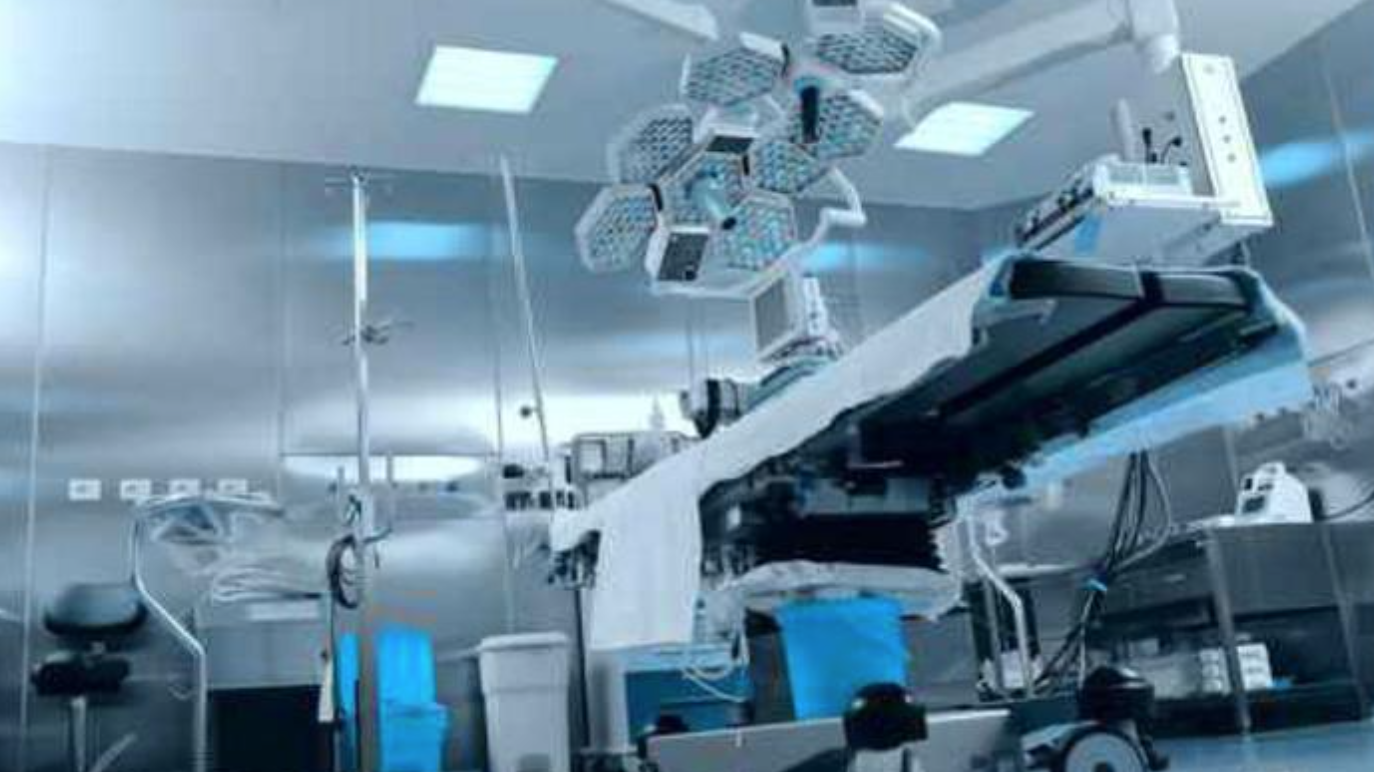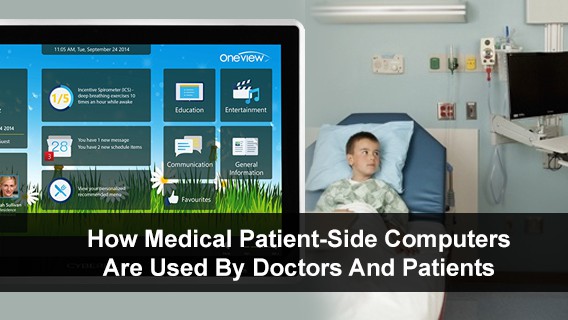Have you been to the hospital or seen your doctor in the last couple of years? Then instead of checking in at the front desk, you were most likely directed to a patient kiosk: a touchscreen device either mounted on the wall or a small standalone booth or table.
What is this device? Why are you asked to enter all your medical information into it instead of giving it to the medical staff? We look to answer those questions today as well as others like the future outlook of the kiosk market especially in healthcare as hospital computer systems.
Kiosk, Medical Kiosk, and Patient Kiosk – A Breakdown
Article Guide
A patient kiosk is an interactive, high-quality, and secure device used to display information or offer self-service options. They may be wall-mounted, built into the wall, on a countertop, or are free-standing. Though most are found indoors, several have been designed for outdoor use.
Kiosks connect to local networks or the Internet via ethernet, WiFi, or cellular data. While they may be found almost anywhere, those with Power-over-Ethernet are especially easy to place since they don’t have to rely on nearby power outlets.
Patient kiosks fall under the category of “Medical kiosks.” Unsurprisingly, they are found in healthcare settings like walk-in clinics, urgent care centers, and hospitals. They usually include a touchscreen, an internal computer like a medical box PC, as well as the kiosk enclosure. Some are also built with a single all in one touch screen computer inside of the kiosk enclosure or even as a stand-alone device sitting on a table or countertop.
Patient kiosks allow patients to access and input information or make payments without assistance from healthcare staff. Additional features may include:
- external keyboards
- credit card readers
- barcode scanners
- various kinds of printers
Some types of medical kiosks can perform basic diagnostic tests like check patient temperature. Some even can disinfect touchpoints like the keyboard. This is done using motion sensors and ultraviolet light.
How Efficiency and Disease Raised Demand for Patient Kiosks
The healthcare industry is always on the lookout to improve efficiency. Many have turned to technological solutions like hospital computer systems to do so. Patient kiosks helped solve two major issues: dealing with patient intake and protection from COVID-19.
Speeding Up Patient Check-in while Reducing Errors
Many healthcare organizations like hospitals find the patient intake process time-consuming and full of redundancy. Traditional paper intake forms can range from one to six pages or more depending on the amount of information needed. Not only is this a slow process, the forms lack personalization and are prone to errors. This makes it harder for both patients and the medical staff.
Patient kiosks look to address these issues. They can:
- Allow patients to enter their personal and healthcare information. This reduced chances of misspellings, incorrectly entered account numbers, etc.
- Replace keystrokes with scanning and form autofill. Smartphones could provide a QR code, while IDs such as a driver’s license and/or their medical card could quickly be swiped and their information sent to fill the patient’s electronic medical record (EMR).
- Collect accurate and complete insurance and ID information. This helps to lead to fewer claim rejections by insurance companies. Also, those uninsured could quickly be identified and provided financial assistance options.
- Process co-payments. Patients can deal with any fees at the point of check-in.
Released from patient intake, the medical office staff can focus on more intensive tasks like:
- Processing insurance forms and paperwork
- Dealing with “Not so simple” registrations
- Managing phone operations
- Booking appointments
- Processing patient transfers and discharges
Maximizing Staff Safety During a Pandemic
Another reason the healthcare industry turned to patient kiosks is, unsurprisingly, the COVID-19 pandemic.
The coronavirus had a massive impact, exposing vulnerabilities in safety, staffing, and operations. It put a limit on in-person interactions. Healthcare, more than any other industry, had to adjust to keep its employees safe in order to maintain its live-saving services. This was especially vital for front desk staff when checking in potentially ill patients.
Medical kiosks provided an important solution. Patients, while maintaining a safe distance, would simply walk up to the patient kiosk and complete virtually all their check-in tasks from one digital touchpoint. Staff members would be nearby, protected from sick individuals by plexi-glass screens or similar barriers. They would be notified of the check-in via text message, a friendly chime on their medical computer, or other forms of alert. The check-in is then put into a queuing system with the patient sent a message with an expected wait time. This also has the additional benefit of automating confirmation messages, a task once handled by the medical office staff.
And once it is safe to do so, healthcare staff can wipe down the kiosk to clean it of any possible pathogens. Features like IP65 rate and fanless design makes sure the kiosk computer did not take in liquids or other particulates which could damage its interior.
The combination of safe distancing and digital patient check-in system helped pave the way for the digital waiting room experience. Instead of sitting in the waiting room for their appointment, patients were now instructed to wait from their car. There they are able to do things like listen to their music, make phone calls, or even work until it’s their turn to come in.
Medical Kiosk Market from 2022 to 2030
Analysts at the time of this writing have stated the market for kiosks in the healthcare industry to be growing at a moderate-fast pace. The value of the market back in 2021 was estimated to be slightly over one billion. Compound annual growth rate (CAGR) for the medical kiosk market is expected to be 14.8 percent from now through 2030.
Hospitals, clinics, laboratories, and pharma stores are unsurprisingly leading the demand for the devices. The Americas, especially North America, as well as Europe are the primary participants in the market.
Closing Comments
Patient kiosks are devices that patients can use to report their arrival at a medical office, clinic, or hospital. This frees staff from the time-consuming process and, later, provided protection from possibly infectious patients during the COVID-19 pandemic.
If your healthcare group is interested in the best medical grade computers to power patient kiosks throughout your facilities, contact a representative from Cybernet.
Also follow Cybernet on Facebook, Twitter, and Linkedin to stay up to date on this and other relevant topics.
Medical Grade Computers: Improving Patient Outcomes in the OR
December 29, 2015
A successful operation requires the seamless coordination of highly skilled individuals. If a surgical team is not able to work in unison, they won’t be able to provide the necessary amount of care to properly take…
0 Comments4 Minutes
How Medical Patient-Side Computers Are Used By Doctors And Patients
September 2, 2016
Computer technology and healthcare are no longer separable, with the rapid adoption of interconnected, smart equipment in all areas of healthcare. A few years ago, patient side infotainment systems grasped the attention…
0 Comments9 Minutes
You Can't
Learn from a Pop-up
But we can deliver knowledge to your inbox!
We dive deep in the industry looking for new trends, technology, news, and updates. We're happy to share them with you.
Knowledge, News, and Industry Updates Right in Your Inbox




